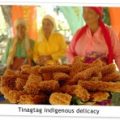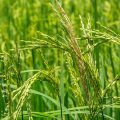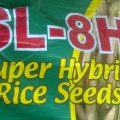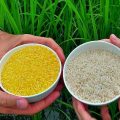The Department of Agriculture (DA) is carrying out a P6 million upland rice organic farming in Bicol which capitalizes on native varieties’ drought tolerance.
It also aims to boost Bicol’s contribution to national rice production as Bicol once accounted for a hefty 20 percent of Philippine rice output.
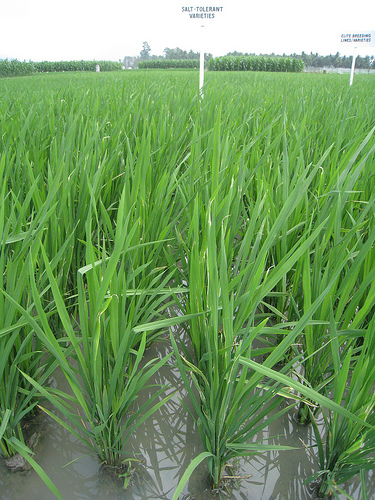
Bicol’s upland rice is being developed for its market potential even as some traditional upland rice strains have been reported to “outperform some modern rice varieties.”
Their advantage is in higher grain production and drought tolerance which has become a critical trait amid the prevailing climate change threats.
Upland rice varieties generally have an average yield of only one to two metric tons (MT) per hectare, but these selected Bicol varieties can exceed such yield average.
The DA-Bureau of Agricultural Research (BAR) identified that a total upland area of 63,699 hectares in Bicol were once completely rice productive in the 1960s. This is based on a report of the International Rice Research Institute.
While the productive upland rice area dropped to 53,480 hectares in the 1970s, all of these lands can be revived now that a climate change program is crucial.
“Our development of upland rice is very timely as these varieties have the potential to withstand higher temperature and less water supply which is what we really need amid the threatening climate change,” said BAR Director Nicomedes P. Eleazar.
The project is focused on popularizing upland organic farming specifically in the river basin towns of Baao and Nabua in Camarines Sur.
Profitability target is 20 percent above prevailing income in the covered uplands.
Allocated BAR funding is P4.998 million while a separate counterpart funding of P1 million will be provided by partners. The program covers 2.5 years.
Better performance
An earlier study indicated that some of Bicol’s upland rice varieties perform better than DA’s check varieties (highest yielding comparative strains).
“Some upland rice cultivars in Bicol such as Palawan, Gayang-gang white, Kinarabao, and Magdami were found to have higher grain yield than PSB Rc9 (check variety),” according to the Bicolandia Greenfields Devt Organization Inc (Bigfis), project partner.
. The tallest upland rice strain evaluated was Sinalapi with 113 centimeter (cm) height. The rice plant with the longest panicle was recorded with Palawan white with 73.88 cm.
Other notable rice cultivars are Bursege, Bolibod Red, and Gios which have the highest number of productive tillers—15.53, 12.93, and 12.87 tillers.
“The upland rice strain with the heaviest 100-seed weight was recorded with Kabring with 3.8 grams. This was followed by Kinalansing with 3.6 grams. Palawan Red had the highest number of grains per panicle followed by Gayang-gang, Palawan white, and Magdami with 226, 221, and 188 grains per panicle,” said Bigfis.
Intercropping
Also part of the project is intercropping of upland rice with vegetables or legumes.
“The intercrops will act as live mulch in between the rows of upland rice. This will prevent weed infestation in the plantation. Expenses for labor on weeding can also be saved by adapting technology,” said Bigfis.
Eyed to be intercropped with rice are peanuts. A study showed that the return on investment (ROI) of a mixture of one row of upland rice plus two rows of peanut was 34.64 percent, better than sole rice cropping.
Other potential intercrops with rice are bush sitao, corn, mungbean, soybeans, tomato, eggplant, leafy vegetables, and okra.
Organic fertilizer benefits
The use of chicken manure as organic fertilizer for upland rice has been proven to have the highest ROI with 53.38 percent especially when compared to commercial organic fertilizer.
Bigfis indicated that a study of upland rice chicken manure fertilization with peanut intercrop generated a net income of P29,589 per hectare. This is much higher than the P12,838 per hectare net income from the same crops with inorganic fertilizer.
Biodegradable wastes like rice husks are being turned into compost fertilizer through a production facility.
Social mobilization
Since it is important to mobilize poverty-stricken people in the uplands to make the program successful, the DA-BAR-Bigfis program is preparing the Baao and Nabua residents through values clarification and inculcation.
It is intensifying membership recruitment, implementing a training program, and introducing a savings and equity campaign.
“One of the salient features of this operational plan is the clustering (Upland Production Cluster or UPC) of partner sitios into one manageable unit and linking them to larger communities. There is a big potential that they could also be linked with larger organizations and markets.”
Support will be in the form of seeds, fertilizers, pesticides, production and post production technologies, credit, post harvest facilities, market.
A contiguous production-commodity area of 10 hectares per partner barangay is being put up.
The UPC can eventually go into contract growing, corporate forming or joint ventures.
It can enter into tie-ups with different allied services and enterprises such as seed growers, credit providers, transport service groups, processing centers, and custom service providers.
Defining Upland
Uplands are those that have a slope of 18 percent or higher and are “declared as public forestlands including those covering foothills to the forest zone line. “
They also include plateaus with elevation higher than 600 meters and lands with more than 50 percent slope which are declared as protected forests.
It is estimated that around 50 percent or 14.3 million hectares of Philippines’ total land area are within the 18 to 50 percent slope based on Bureau of Soils and Water Management record.
Philippine uplands are known to be habitats of 24 million people who are mostly suffering from poverty and environment-related disasters.
Among the problems in uplands are landslide, soil erosion, biodiversity loss, and lack of soil fertility. Watersheds also suffer from reduced water storage which affect water supply in irrigated areas especially during the dry season.
Declining rice production
Upland rice production in Bicol slowly decreased due to farmers’ shift to the planting of other crops like corn and legumes in expectation of higher income.
DA reported that as of 2008, upland rice in Bicol was planted on a total of 3,281 hectares, just a fifth of the upland rice area in the 1960s.
“The past several years had manifested the cruel unpredictable weather condition in the Bicol region where significant losses in the agricultural sector were recorded,” reported the Bigfis.
Bicol has been among the Philippine provinces adversely affected by destructive typhoons and weather disturbances that were somehow attributable to climate change.
Continuous rains in 2008 caused damaged on26,640 hectares out of the 126,961 hectares of standing crop in the dry season cropping. That damage affected 40,426 farmers. They lost P381.377 million in damaged crop.
“This situation will redound to further deterioration of the upland ecosystem as farmers will look for alternative livelihood sources which are destructive in nature such as kaingin, charcoal-making, firewood or fuelwood production,” said Bigfis.
Financial assistance needed
Bicol farmers are among those that need the most financial assistance amid climate change since rice farming in flood-prone lowland areas is considered too risky “especially for marginalized farmers as climatic condition is very unpredictable.”
This is also why upland rice production is ideal since it can make up for any shortfalls in flood-prone lowland irrigated areas. This is specifically during wet season cropping when flooding in lowland prevails.
“Uplands are now production frontier. Yield has the potential to improve through improved varieties and cultural management practices to suit the soil, climatic, and social conditions. These can be achieved through research and extension, sound national policies and programs, and institutional and governance reforms,” said Bigfis.
Climate change’s threats intensify with increasing population pressures.
But the intensification of organic agriculture to enhance upland rice production is a strategy that can counter these pressures on food security.
“The adoption of organic agriculture is a proven approach for increasing productivity and income,” said Bigfis.
The upland rice program is fully supported by government as sanctioned by the Organic Agriculture Act (OAA) of 2010.
OAA aims to enrich soil fertility, reduce pollution and farming’s environmental destruction, prevent natural resources depletion, save on imported fertilizer, and protect the health of farmers and consumers alike.
###
For interview requests, please call 0916-266-6604
